Eumorpha phorbas
|
|
Updated as per
AN ANNOTATED CHECKLIST OF THE SPHINGIDAE OF BOLIVIA, October 2007
Updated as per http://biological-diversity.info/sphingidae.htm (Belize), November 2007
Updated as per Fauna Entomologica De Nicarauga, November 2007
Updated as per The Known Sphingidae of Costa Rica, November 2007
Updated as per personal communication with Jose Monzon (Guatemala); May 2009
Updated as per personal communication with Peter Bruce-Jones (Shima, Junin, Peru, June 12, 2010); February 4, 2011
Updated as per personal communication with Andres Urbas (Kaw Mountains, French Guiana, March 31, April 1, 8, 2011); April 19, 2011
Updated as per personal communication with Humberto Calero Mejia (PNNG, Isla Gorgona, Cauca, Colombia, June 3, 2011); October 12, 2011
Updated as per personal communication with Jose Ramon Alvarez Corral (Bolivar, Venezuela) May 28, 2012; ongoing
|
Eumorpha phorbas
you-MOR-fuhMFOR-buhs
(Cramer, 1775)
Sphinx
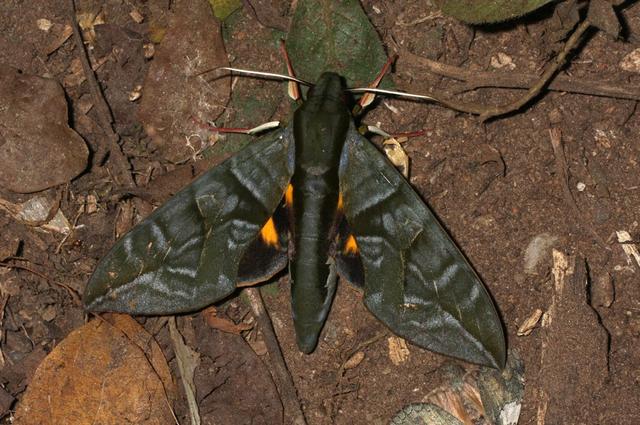
Eumorpha phorbas, Shima, Junin, Peru,
June 12, 2010, courtesy of Peter Bruce-Jones.
This site has been created by
Bill Oehlke at oehlkew@islandtelecom.com
Comments, suggestions and/or additional information are welcomed by Bill.
| TAXONOMY:
Superfamily: Sphingoidea, Dyar, 1902
Family: Sphingidae, Latreille, 1802
Subfamily: Macroglossinae, Harris, 1839
Tribe: Philampelini, Burmeister
Genus: Eumorpha, Hubner, [1807]
Species: phorbas, (Cramer, 1775) |
MIDI MUSIC
"What.A.Wonderful.World"
copyright C. Odenkirk
MIDI CITY
ON.OFF
<bgsound src="world.mid" LOOP=FOREVER>
|
DISTRIBUTION:
Eumorpha phorbas
(wingspan 112-121 mm) flies in Suriname
and in
Mexico;
Belize: Cayo;
Guatemala: Izabal (JM);
Nicaragua: Zelaya, Rio San Juan;
Costa Rica: Guanacaste, Puntarenas,
Heredia, Limon, San Jose, Alajuela.
I suspect there are populations in the other
Central American countries.
In South America it is confirmed in
Colombia: Isla Gorgona;
Venezuela: (Bolivar (JRAC);
Suriname;
French Guiana: Kaw (AU);
Peru: Junin: Shima, probably throughout eastern Peru;
Ecuador: Orellana, probably throughout eastern Ecuador; and
Bolivia: La Paz, Santa Cruz. I suspect
it is also in Venezuela (now confirmed (JRAC)), Guyana, eastern Columbia and northwestern
Brazil.
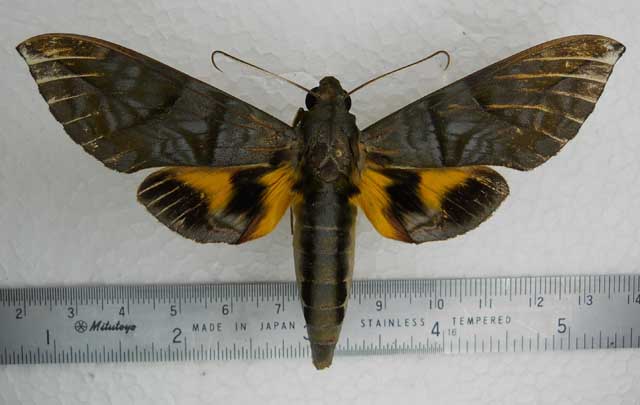
Eumorpha phorbas Parque Nacional Natural Gorgona, Isla Gorgona, Cauca, Colombia,
June 3, 2011, courtesy of Humberto Calero Mejia from project:
Evaluación del estado actual de los objetos de
conservación faunísticos en Isla Gorgona:
una aproximación holística a la valoración ecológica de Parque Nacional Natural Gorgona.
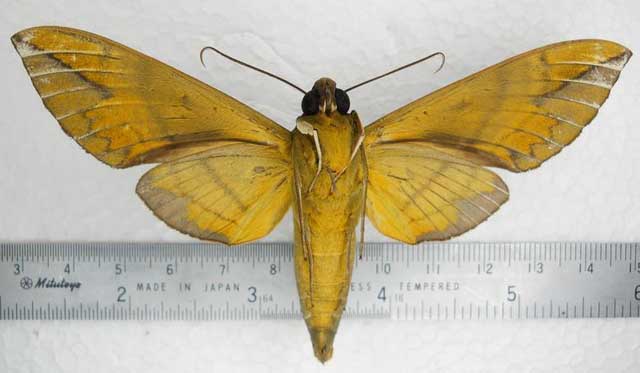
Eumorpha phorbas Parque Nacional Natural Gorgona, Isla Gorgona, Cauca, Colombia,
June 3, 2011, courtesy of Humberto Calero Mejia from project:
Evaluación del estado actual de los objetos de
conservación faunísticos en Isla Gorgona:
una aproximación holística a la valoración ecológica de Parque Nacional Natural Gorgona.
FLIGHT TIMES AND PREFERRED FOOD PLANTS:
Eumorpha phorbas broods continuously with adults on the wing
every month of the year in Costa Rica and along the west coast of South America as far south as Bolivia.
Andres Urbas confirms a March 31, April 1-8, 2011, flight near Kaw, French Guiana.
Adults nectar at various
flowers. Eumorpha phorbas larvae probably feed upon grapes
(Vitaceae), dogbane (Apocynaceae), or evening primrose (Onagraceae)
families. Eumorpha phorbas in resting pose, Yasuni, Ecuador,
September 7, 2002 - 2:40 AM, courtesy of Steve Graser. |
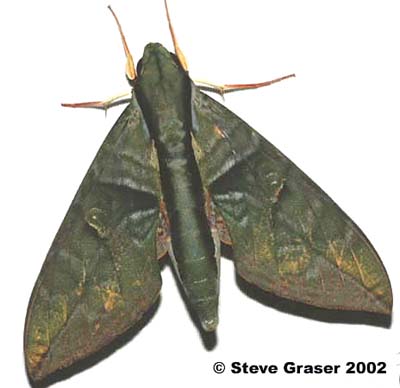 |
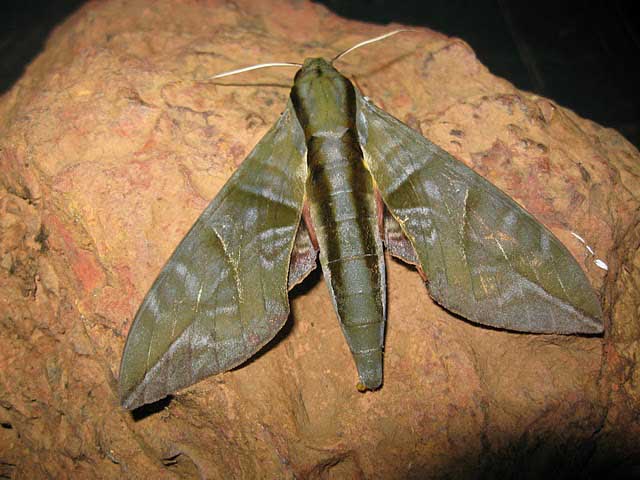
Eumorpha phorbas, near Kaw Mountains, French Guiana,
April 1, 2011, courtesy of Andres Urbas.
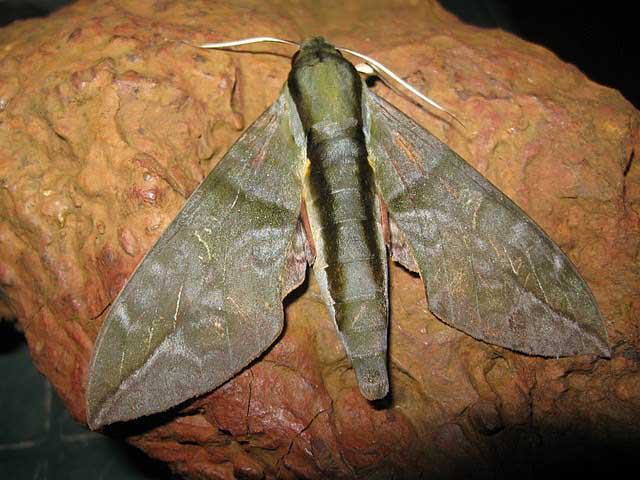
Eumorpha phorbas, near Kaw Mountains, French Guiana,
April 8, 2011, courtesy of Andres Urbas.
ECLOSION, SCENTING AND MATING:
Pupae wiggle to surface just prior to eclosion. Females call at night, and males (below) fly into the wind to pick up and track the pheromone plume.
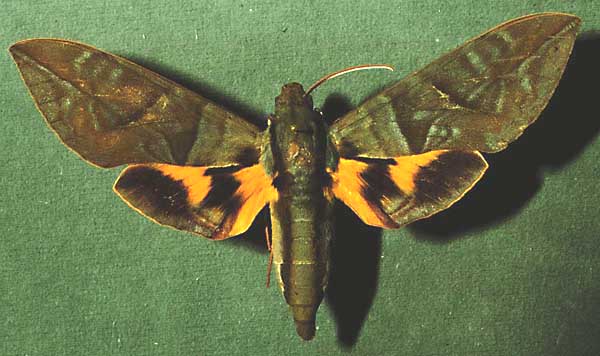
Eumorpha phorbas male, Costa Rica, courtesy of Dan Janzen.
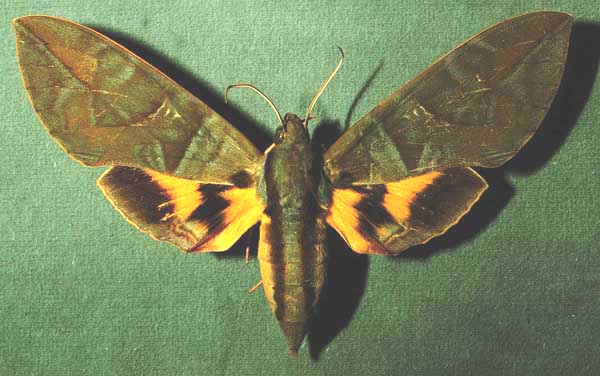
Eumorpha phorbas female, Costa Rica, courtesy of Dan Janzen.
EGGS, LARVAE AND PUPAE:
Larval Food Plants
Listed below are primary food plant(s) and alternate food plants. It is hoped that this
alphabetical listing followed by the common name of the foodplant will
prove useful. The list is not exhaustive. Experimenting with closely
related foodplants is worthwhile.
Vitaceae .......
| Vitaceae
|
Return to Philampelini Index
Return to Sphingidae Index
Use your browser "Back" button to return to the previous page.
This page is brought to you by
Bill Oehlke and the
WLSS. Pages are on space rented from Bizland. If you would like
to become a "Patron of the Sphingidae Site", contact Bill.
Please send sightings/images to Bill. I will do my best to respond to
requests for identification help.
Enjoy one of nature's wonderments: Live
Saturniidae (Giant Silkmoth) cocoons.
 | 
Show appreciation for this site by clicking on flashing butterfly to the left.
The link will take you to a page with links to many insect sites. |









